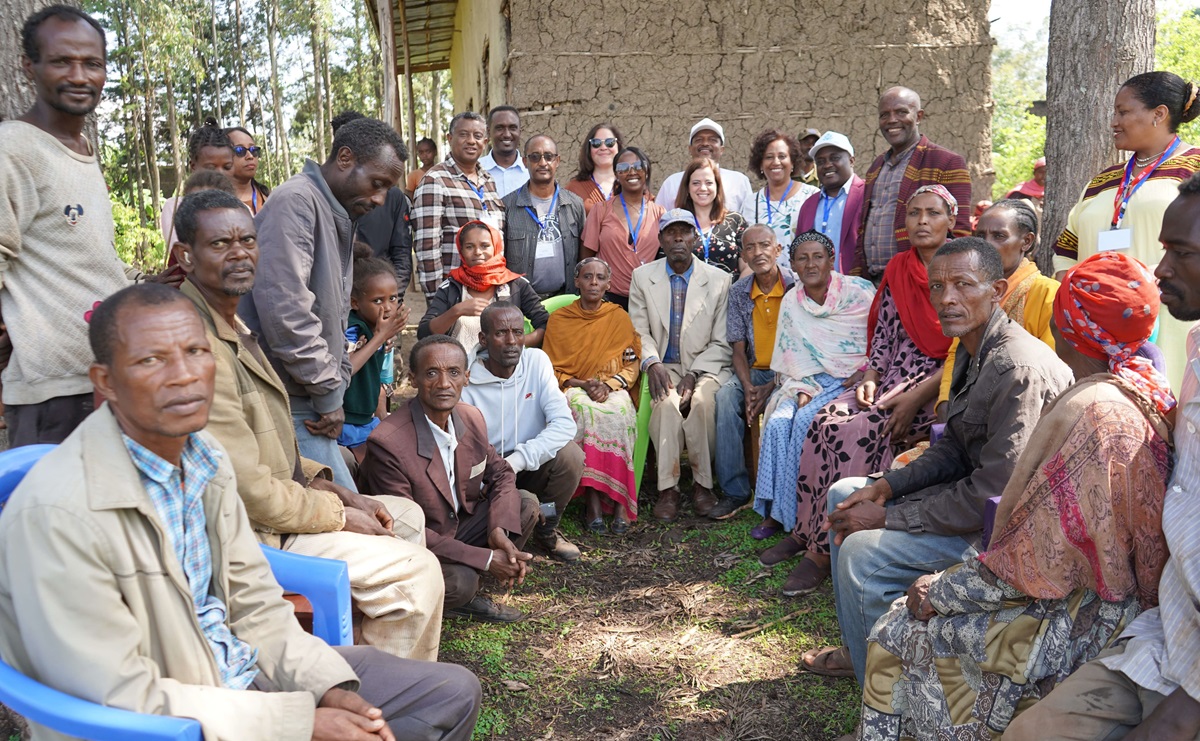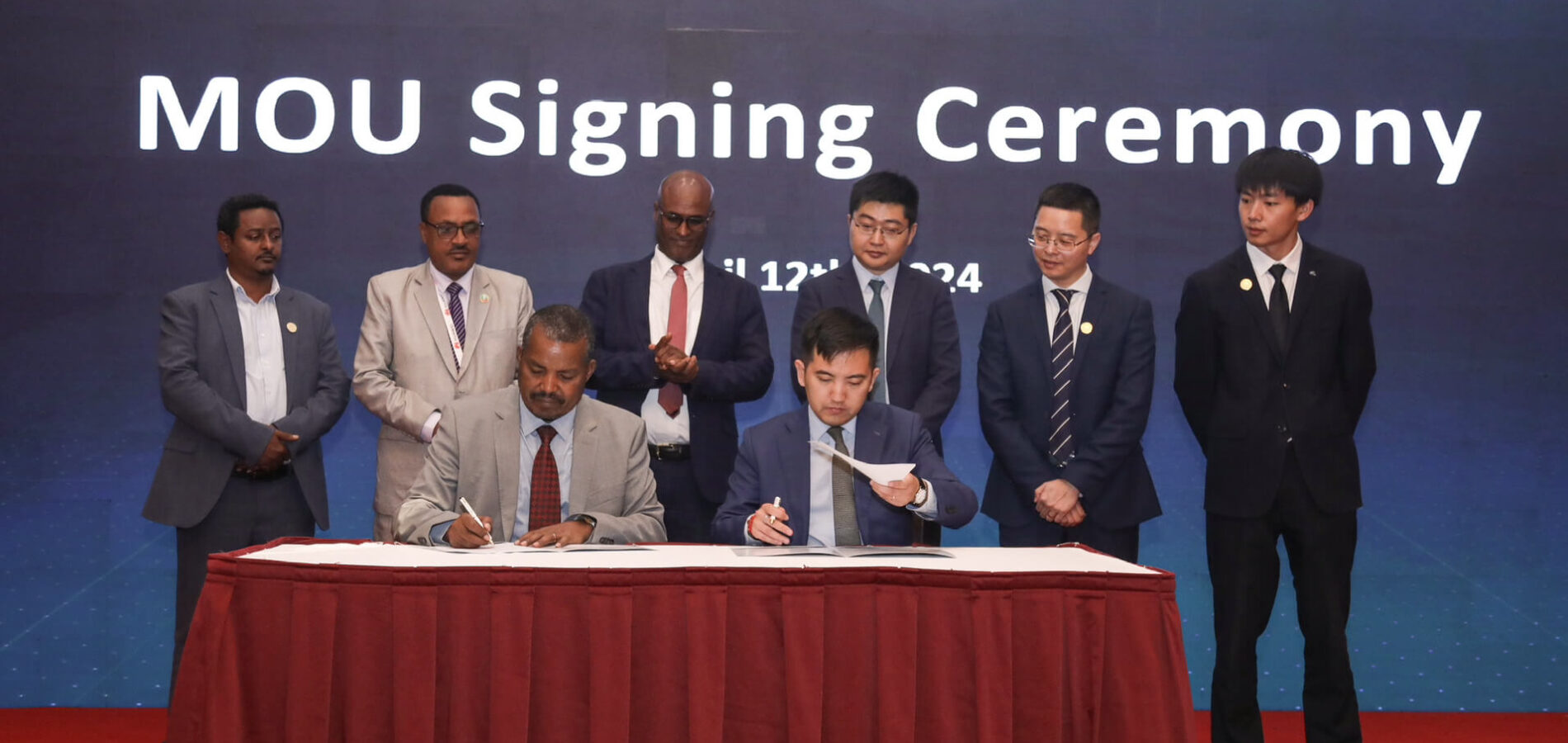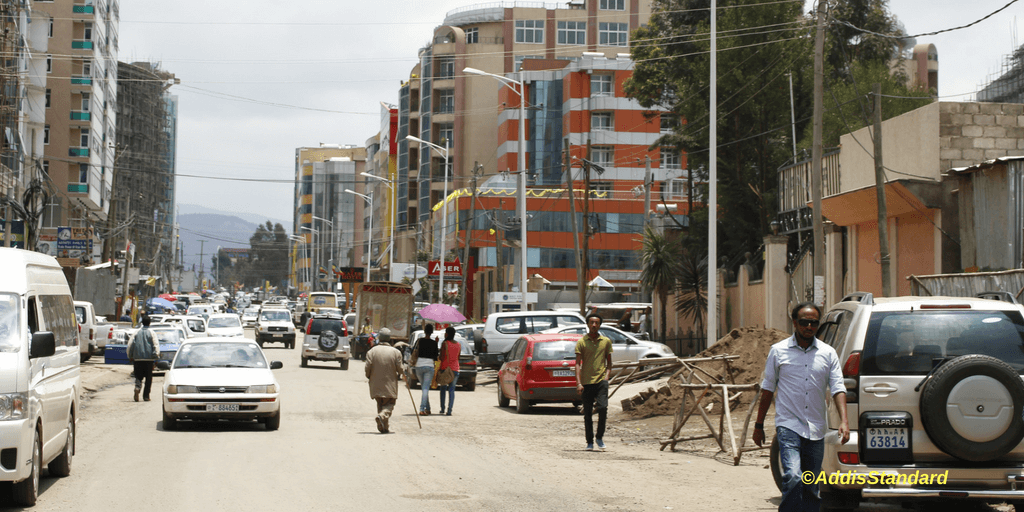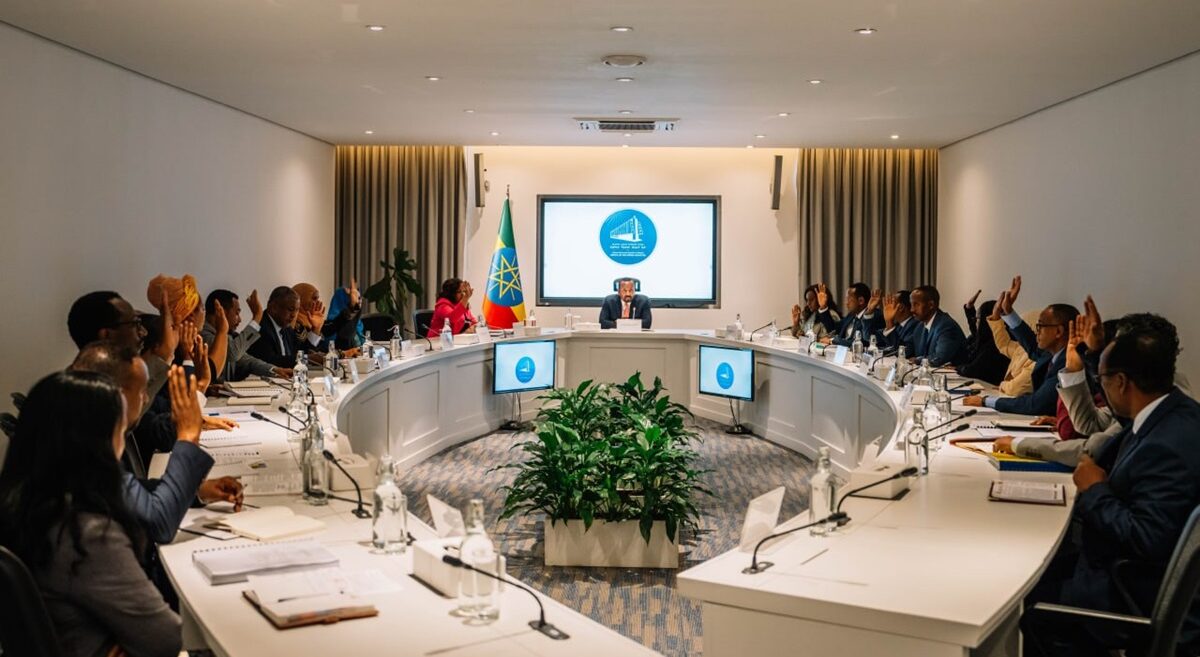Analysis: The role of the Qeerroo in future Oromo politics
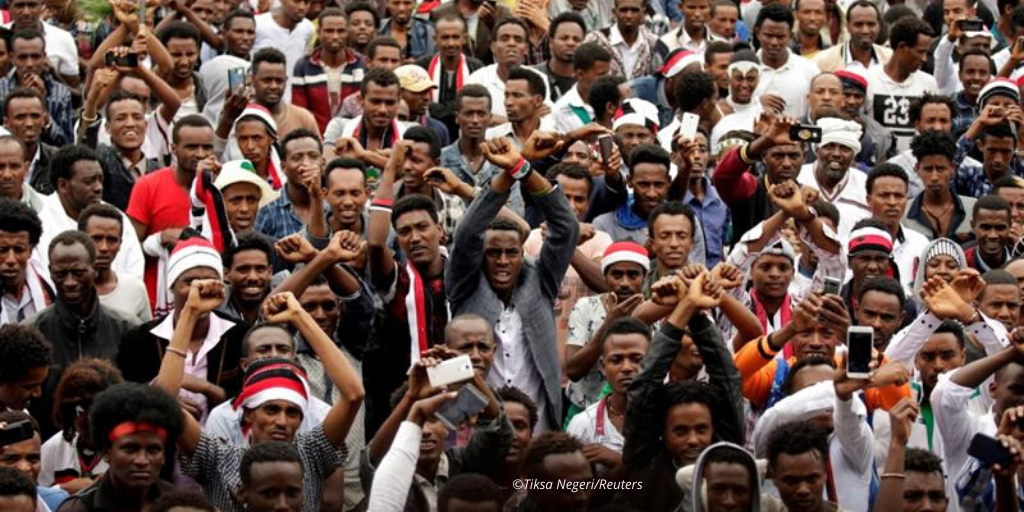
By Terje Østebø @tostebo
Addis Abeba, May 26/2020 – The Qeerroo movement emerged as a significant political actor in the course of the Oromo protest, and has since then followed a complex trajectory. Starting off as a massive opposition movement, it became instrumental in the transition that brought PM Abiy Ahmed to power, yet has become more critical towards him. There are many unknowns when it comes to the Qeerroo, and it is in particular relevant to ask where the movement is today, how last years’ political changes have impacted the movement, and what potential role it may play in future politics. In this analysis, which is based on travels and conversations with people at the grassroots across the Oromia region in early 2020 and on over 20 years of research among the Oromo, I try to address these questions.
The Qeerroo and the 2018 Transition
The Qeerroo rose to fame in 2014 through widespread protests among youth across Oromia. Spurred by the proposed new Addis Abeba and Surrounding Master-plan and fueled by underlying despair, the protesters soon called for the overthrow of the government. The authorities’ response to the protests was rather heavy-handed, resulting in an unknown number of casualties. As the protests continued unabated, the government answered by declaring two rounds of state of emergency – the first in October 2016 after the Irrecha incident, and the second in February 2018 at the time of Prime Minister Hailemariam Dessalegn’s resignation. The arrival of Team Lemma with that-time chairperson of OPDO and President of Oromia Lemma Megerssa and his OPDO deputy Abiy Ahmed signaled more positive attitudes towards the Qeerroo, underscored by Lemma Megerssa’s vow to “address the legitimate concerns of the youth.” This soon earned the two significant support among the Oromo protesters, and the Qeerroo became a key ally for Abiy Ahmed as he took over as prime minister in April 2018.
The Qeerroo hence claimed a stake in the government, and Team Lemma’s Oromo nationalist rhetoric created strong expectations among the Oromo, who saw the new Abiy-era as a “now it’s our turn” moment. Prompted by unprecedented political reforms enthusiasm for Abiy Ahmed quickly spread beyond the Oromo constituency to the broader Ethiopian population, making the first months of his tenure characterized by a particular “Abiy-mania.”
The “honeymoon” soon came to an end, however, and Abiy Ahmed’s popularity gradually gave way for increased skepticism. The first signs of outright opposition came in September 2018, when celebration of the return of the OLF forces caused fighting and killings in the town of Burayu at the outskirts of Addis Abeba. This incident was followed by increased unrest and instability across the country, with conflicts in Gedeo-West Guji, Qemant in Amhara, Konso in the southern region, along the Somali-Oromo borderlands, and disputes over the Wolkait area in Tigray. The number of internally displaced skyrocketed to a world record of over three million, and people started to question Abiy Ahmed’s ability to maintain law and order.
The Qeerroo, the Protests, and Local Administration
The Oromo protests had significant impact on local administrative structures, temporarily limiting the state’s presence in every corner of the Oromia region. This presence had been secured through elaborate local governance structures down to the grassroots, where the kebele controlled almost everything: public health, delivery of agricultural support, maintenance of the surrounding peace and security, and provisions of social welfare. State-presence became even more enhanced when the government, prior to the national election in 2010, started the process of dividing the kebele into even smaller units, known as gott and garee. Each household in a gott was later organized into what became known as the one-to-five networks, in which one model farmer was given the responsibility for leading and following up with five other households. While these elaborate structures were intended to serve as a key tool in Ethiopia’s quest for development and social change, they became very important tools for the government in securing political control over the grassroots.
In the course of the Oromo protests, local government structures were attacked across Oromia. Kebele buildings were burned and destroyed, and local officials chased away. This was in particular prominent during the so-called “week of rage” in response to the Irrecha incident in October 2016. It is difficult to determine to what extent the local administrative structures were affected. In West Shoa the Qeerroo more or less dismantled the whole kebele structure: chasing kebele leaders away, burning down their homes and kebele offices, and confiscating guns from the militias. There is no indication that these were coordinated efforts, and attacks appeared to be rather selective. According to one of my informants “it was the corrupt officials, those who had participated in the cheating during elections that were targeted.”
In other instances, the Qeerroo took over local administration and in many areas, they played an instrumental role in securing law and order. At kebele level in some rural areas the Qeerroo acted as shadow-governments. As expressed by one informant, “the local authorities needed to consult with the Qeerroo when they made decisions.” In Harar, for example the Qeerroo turned off the water to the walled city for weeks in July 2018, demanding ten million birr to support 15,000 unemployed youth in Haramaya in return for water supplies. While the situation has, as I will return to, changed, informants generally agree that the Qeerroo remains an important political actor and force in many rural areas.
During the protests there were cases where local Qeerroo groups took matters in their own hands, where old scores were settled, and where brutal acts of violence were committed. Lack of effective governing structures moreover unveiled internal tensions among the Qeerroo, leading, in some cases, to conflicts between different Qeerroo groups. In one kebele outside Haramaya in Hararge, for example, different groups fought over control over the local administration – particularly over who would control the finance office. The conflict went so far that local community had to appeal to the federal army to solve the situation. Internal divisions was, as I have discussed elsewhere, also noticeable in Robe Bale, where the Qeerroo was divided between the Christian Shoa Oromo and the Muslim Arsi Oromo. Religion in these areas have been intimately tied to ethnic identities, and where the complex relations between the Christian Shoa Oromo and Muslim Arsi Oromo also impacted the Qeerroo movement. Informants attributed this to the movement’s lack of organizational structures, and one argued that “they don’t have any ultimate goal and formal leadership… all they do is to fight among themselves.”
The Nature of the Qeerroo as a Movement
This brings us to the question of what kind of movement the Qeerroo actually is. Foreign observers, Ethiopian political analysts, and many ordinary Ethiopians have struggled to define it and to identify its internal structures. The Qeerroo is said to be formally organized as the National Oromian Youth Movement, which had its own homepage. It is, however, doubtful that this is the main representative body of the movement. Some claim that it emerged in the 1990s as part of the Oromo Liberation Front (OLF), while others argue that the Qeerroo started around 2005, as an underground network called “Qeerroo Blisumma Oromia” (Qeerroo for the Freedom of Oromia). Recently Qarree has appeared as the female counterpart to the male Qeerroo, and some even claim that the Qarree “recently has been formalized.”
It is difficult to verify these claims. It emerged as a spontaneous grassroots social movement without any formal structures. It has been argued that the word Qeerroo itself refers to an unmarried person between 20 and 36 – an interpretation generally shared by the local informants. It is therefore possible to say that the Qeerroo exists both in a “latent” mode as the masses of the Oromo youth and in a “manifest” mode as the protesting Oromo youth.
This does not mean, however, that the movement was completely uncoordinated. The mobilization of any social movement or, in this case, the “manifestation” of the Qeerroo, requires some kind of coordination. Crucial here is that this was of an informal and decentered manner. While the Qeerroo – as Oromo youth – was (and is) found across Oromia, both in urban and rural areas, it was only in the urban areas, i.e. smaller and larger towns that one could talk about any organizational structures. This usually had the form of informal leadership groups, often without any designated leader. There were no formal election processes, and one Qeerroo leader in Bale said that “the youth just came together and chose the ones they liked and thought were the best.” Such leaders played the role of organizers, and while influential, the informal structures limited their reach. In many towns, there were often different Qeerroo “teams” operating in different neighborhoods.
What seems clear, however, is that there existed very limited horizontal structures among the Qeerroo across Oromia. Key were the vertical structures wherein Jawar Mohammed was – and still is – the main hub: “Everything went through Jawar, it is he who gave the orders.” According to one informant, the main tool has been Facebook:
“He [Jawar Mohammed] would post something on Facebook, and everyone would know it, he was the hub. He was also the first to establish independent Oromo TV… The horizontal communication was between different leaders of different Qeerroos in different villages. The leaders knew who the other leaders were, and they would call them if something was happening. But the hub was Jawar.”
Some individuals communicated directly with him via phone. As internet is not readily available in many rural areas, Qeerroo leaders in the towns would transmit instructions via phone or text to those in their rural surroundings. The Qeerroo managed, moreover, to find ways to communicate during the period of internet blackout. One Qeerroo leader in Hararghe said, for example, that people “would travel either to Wajale [border-town with Somaliland], to Addis, or even to Somaliland or Djibouti – and check internet and report back to people.” Messages would subsequently simply be spread by word of mouth within different localities.
While the informal and decentered character of the Qeerroo has been crucial for the success of the movement during the protests – giving it much flexibility and making it evade attacks by the security forces – lack of organizational structures could also make it susceptible to interference from the government.
Restoration of Local Structures and Cooption of the Qeerroo
Abiy Ahmed’s government was for some time unable to rebuild effective local administrative structures. In many areas it proved difficult to recruit local officials as no one wanted to take the positions of the kebele officials who had fled. In areas administered by the military Command Post, it was the army that was tasked with rebuilding the structures, in some cases also forcing people to fill the offices. As members of the local community, kebele officials often find themselves in a difficult situation of being the agents of the state and, at the same time, representing the people vs. the state. Whereas there are variations, it seems clear that the new local officials became increasingly conscious about being representatives of their communities. It is, at the same time, clear that the services provided at kebele level have become limited. Lack of coherent and effective administrative structures have also paved the way for corruption at the kebele level – and consequently led to a great deal of discontent among the population. This seems to have prevailed in many areas, and one informant expressed this as follows:
“They [kebele officials] are not serving the people at all. What they do now is selling people’s sugar and oil, snatching money from our women, selling ID card to outsiders. You can’t find any of them in their office, they work from the chat houses. Nobody controls them.”
The government has since late 2019 intensified its efforts to rebuild local administrative structures. At the worreda level, the process has been less inclusive than at the kebele level. In many places people were presented with a pre-screened list of possible candidates to take up positions in the worredas. Most of these were from the local community, but they were all old OPDO cadres. People were not much satisfied with the choices, but were left with no other option than to accept them.
The general sentiment among informants is that not much has changed at the worreda level in terms of local governance. One said that “the people at worreda level are like a replica of the old guard. They are all cadres from the old party, and there is no difference.” There are indications that worreda administrations, since late 2019, have become more effective– reflected in a better functioning local police, re-establishment of law and order, and provision of services. The restructuring has, at the same time, also led to increased control, and informants claimed that “the old command structure is being re-established.” According to one informant: “it is the same corrupted thieves that are in charge. Abiy has been talking about forgiveness, but when corrupted leaders are not held accountable, how can they be forgiven?”
The restoration of local administrational structures also entailed integration of the Qeerroo. A common pattern was that local Qeerroo leaders were given positions within youth and sports offices, and in addition to providing these individuals with steady salaries, they were also given access to new resources. These resources were often used for their own benefits and redistributed to other Qeerroo leaders, which, according to some informants opened the door for corruption: “All of a sudden they start to do business – mostly with the government apparatus. The local administrations handed lots of projects to the Qeerroo.” This generated infighting between different local Qeerroo groups.
While some of the Qeerroo leaders were coopted by Abyi’s regime, the overwhelming portion of Oromo youth have become the most explicit critics of Abiy Ahmed’s government. This became noticeable in October 2019 when the government tried to remove Jawar Mohammed’s security detail and more pronounced when Abiy Ahmed dissolved the EPRDF coalition and created the Prosperity Party (PP) in December 2019. This was, by many, seen as a betrayal of the Oromo. They fiercely denounced the PP as a unitary party and argued that this was the start of the return of Amhara domination. The newly established Unity Park in Addis Abeba became proof of this, and the youth particularly complained about the park’s pictures of emperors Menelik and Haile Selassie. One informant lamented that: “there is only one Oda tree in the park – of plastic, and there is no mention of atrocities like Anole.” Opposition based on ethno-nationalist rhetoric was underpinned by a prevailing harsh socio-economic situation – and the discrepancy between this and the youth’s high expectations of a “quick fix” solution to be brought by Abiy Ahmed. Lack of tangible socio-economic change has not only brought the youth back to a perpetual sense of marginalization, hopelessness and despair, but broken expectations have furthermore exacerbated this situation, adding to, and reinforcing their disappointment, discontent, and anger. As one Qeerroo activist expressed it: “there has been no development, everything is like before.”
There are, however, some Qeerroo leaders who initially supported Abiy Ahmed, and who have found it difficult to retract their support. The fact that they had been rewarded with positions within the system has obviously contributed to this, and points to how the integration of the Qeerroo into local administrations also enabled the government to sow divisions among the movement’s leaders.
More significant is how the ruling party actively and deliberately has sought to recruit and coopt influential individuals within the Qeerroo movement. This is part of a larger strategy to create a “Qeerroo Haaromsaa” – or a Reform Qeerroo. The Qeerroo Haaromsaa launched a Facebook page with the same name, which, however, has been inactive since August 2018. Efforts of cooption have been carried out by local administrators, who in return for Qeerroo leaders’ support to PP have provided them with cash and other benefits. These are in particular people from the urban areas with higher education and who were known as organizers. Efforts of cooption seem to have intensified since the end of 2019, and although there have been local variations, informants across the region painted the same picture of active government interference. A higher official in the federal government also confirmed this, saying that a Qeerroo leader approached him during a meeting in Adama and claimed that he was the real Qeerroo leader, while discrediting other leaders as fake ones. In some cases, local administrators have actively disparaged the existing local Qeerroo groups and even created new groups loyal to the government, exacerbating the internal divisions. One informant expressed this as follows:
Abiy is smart. He has background from the intelligence service, and he knows how to play people, how to divide, how to create suspicion, and how to set people up against each other… he gave the main Qeerroo leaders jobs, positions, property, and land. In other words, the Qeerroo leaders are now in the pocket of the government.
Corruption and cooption have inevitably exacerbated internal divisions and fragmentation within the Qeerroo movement. A number of informants confirmed this, some saying that there currently are “so many types of Qeerroo’s everywhere in our localities.” The main distinction can be drawn between the “bitama” (traitors) – those with ties to the authorities – and the “real” Qeerroo, those opposing them. Informants in Ambo argued that Qeerroo leaders who now are allies with the local authorities “never were real Qeerroo leaders, but people who were spying on the real Qeerroo while in prison.” Some even claimed that the “real Qeerroo” is being reorganized underground. Whether this is the case is difficult to ascertain. In Ambo, the increased presence of the Oromo Liberation Army (OLA) in its surroundings has furthered the fragmentation of the Qeerroo. In addition to the Qeerroo aligned with the authorities and those opposed to it, a third and more militant group has emerged – said to be affiliated with the OLA. Representatives from OLA has increasingly entered Ambo town, encouraging the youth to take up arms and join the OLA. Abiy Ahmed’s government has, in response to this, resorted to imprisonment of thousands of Oromo youth.
Cooption, coercion and divide-and-rule tactics have always been a fallback position when central authority in Ethiopia has been threatened, and it seems clear that Abiy Ahmed is resorting to this as well – making use of the EPRDF playbook. It is, however, unclear to what degree this actually has weakened the movement. Jawar Mohammed himself claims that the government has failed to effectively infiltrate the movement and that it remains largely intact. Acknowledging that some Qeerroo leaders were engaged in unlawful activities, among others extorting business communities – out of desperation of having no income – he advised them to take position within the government structure. He claimed, however that these Qeerroo leaders still remain loyal to the opposition (personal communication).
One could ask whether a formalization of the Qeerroo with the establishment of a formal, structured organization would have thwarted outside interference. Jawar Mohammed remains opposed to this, fearing it would make the movement even more susceptible to government intrusion (personal communication). Informants agreed that there are limitations to what Jawar Mohammed could do to address the increased co-option of the Qeerroo, and one informant said that “Jawar has become a politician, he can’t talk like he could before, he has to be careful.” In any case, this has created a great deal of frustration among the Oromo youth, as expressed by one informant: “I used to think that all the officials and cadres were corrupted, and I hoped that when the activists took power, things would become different. But what I see now is the same thing – the activists are just as corrupt as the officials.”
The Qeerroo and Future Oromo Politics
Regardless of what has been said so far, there is little doubt that the Qeerroo has been and continue to be a political force, with significant potential. The vast majority of the Oromo youth supports the opposition – the Oromo Federalist Congress (OFC) and, in particular, Jawar Mohammed – something evidenced by the youth’s massive turnout during OFC’s rallies, where also local Qeerroo groups were the ones organizing the arrangements across the region. Even if Jawar Mohammed, since running for office, has become more restrained in his communication with the Oromo youth through social media, there is little doubt that they remain loyal to him, and that they immediately would respond to his instructions. It is also plausible that the coopted Qeerroo leaders’ support for the ruling party is tactical, and that they easily could shift side. Shifting alliances has been a hallmark for Ethiopian politics for centuries, and René Lefort’s reference to the Abyssinian proverb “the king who reigns is my king” has similar relevance for the Oromo context.
While the Qeerroo’s decentered and informal character has been a political force, it poses, at the same time, certain challenges. First of all, it is a movement that is difficult to control. One informant pointed to the dire socio-economic situation among Oromo youth, arguing that “when they live with little hope, and when they think of past injustices, they can be difficult to control.” Another challenge of its decentered character is how it has become open for government interference and vulnerable to internal divisions. Lack of coherent horizontal structures and defined leadership created at the outset limitations for the movement, which seems to be exacerbated by the cooption of local leaders. Oromo youth across the region lamented these developments, feeling dispirited and “left alone.” Frustrated about their own and the broader political situation, the general sentiment was the lack of any meaningful directions.
This is, however, not to say that the Qeerroo has outplayed its political role. It still represents an enormous political power. There is, at the same time, a great deal of uncertainty about what role the Qeerroo might play. Much of this will obviously depend on immediate political developments in general, and even more so, on the kind of directions the Oromo political leadership, particularly Jawar Mohammed, will provide the movement. What is certain, though, is that the Oromo youth – and Ethiopian youth more broadly – represents a significant political force ready to be mobilized. With an estimated 59 percent of the population under 25 and dire socio-economic prospects – now being exacerbated by long-term impacts of the COVID-19 pandemic – the future is largely to be defined by them. AS
______________________________________//________________________________
Terje Østebø is Associate Professor in the Department of Religion and the Center for African Studies, University of Florida.His main areas of research are Islam in Africa, particularly in Ethiopia and in the Horn of Africa, and he has extensive field-work and research experience from Ethiopia.He can be reached at ostebo@ufl.edu
Muhammad Jemal contributed to this article. He is an Assistant Professor at the Medda Wellabu University in Robe, and can be reached at abuahmedmjky@gmail.com


